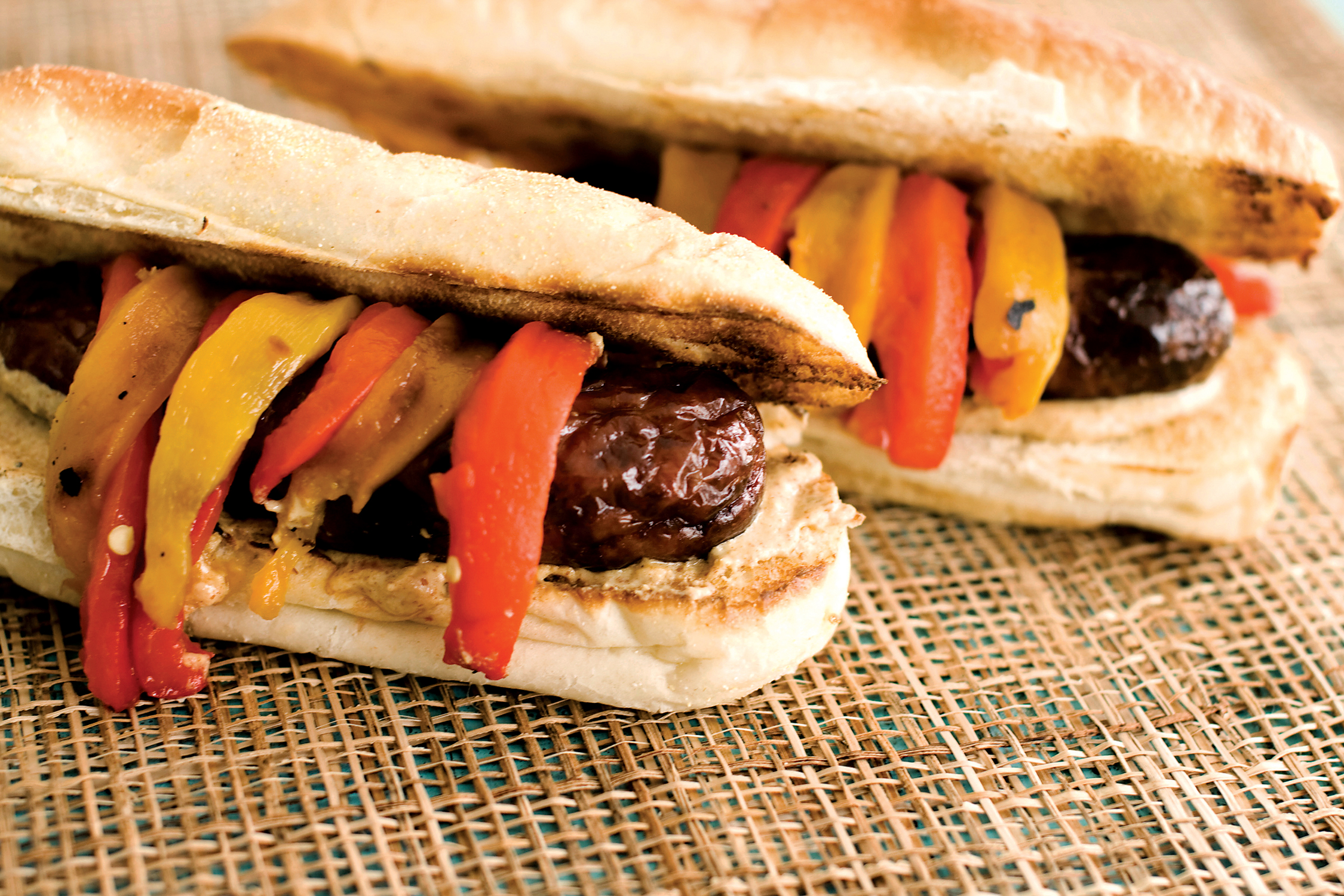GRILL CLEANINGFollow this checklist and grill maintenance will never be a big job• Preheat the grill on high every time you use it.• After pre-heating, use crumpled foil to loosen and clean away any gray ash or leftover residue on the cooking grates.• After removing the food from the cooking grate, turn burners back to high and burn any stuck-on food off for 10 to 15 minutes.• After each use, use a brass-bristle grill brush or crumpled foil to loosen and clean residue on the cooking grate.• Remove accumulated ashes from charcoal grills frequently.• Clean both the inner and the outer drip pan of a gas grill frequently• Once a year, clean the inside of the grill with warm, soapy water.GRILL SAFETY• Always read the owner's manual before using a new gas or charcoal grill.• Do not lean over a barbecue grill when igniting.• When lighting a gas grill, the lid should always be open.• Gas or charcoals grills should NEVER be used indoors; they are outdoor cooking appliances.• Every time a refilled propane tank is reconnected to the barbecue, the hose connection should be checked for leaks.• Always use heat-resistant barbecue mitts or gloves and long-handled tools.• When done cooking, cover the charcoal grill and close all vents. Turn a gas grill off at the burners and the gas source.
Whether you've just bought a shiny new grill or pulled your old one out of winter hibernation, step No. 1 before embracing grilling season is to clean and season it.
Grills are like cast-iron skillets; the more you use them, the better they cook. That's because food cooks on the grill, the fats and juices are instantly vaporized by the heating elements or charcoal briquettes. The vapor creates the smoke that flavors the food with that legendary grilled taste. The smoke that isn't absorbed by the food accumulates on the inside of the grill, and so the grill gets "seasoned."
First, read or reread the owner's manual for your grill, says Leslie Wheeler, spokeswoman for the Hearth, Patio & Barbecue Association, a trade association based in Arlington, Va.
Inspect your grill. "Make sure the legs are sturdy, that things haven't rusted out, the vents are working properly and the burners are clean," Wheeler says. With gas grills, make sure there are no holes or leaks in any hoses, that the hoses are properly hooked up and all connections work properly.
Then comes the cleaning. If you've had your grill for a while and use it a lot, you may notice that the lid of the grill looks like peeling paint. It isn't. This is simply the accumulation of layers of smoke. Warm soapy water, a scrub brush and a little elbow grease will take the excess bits of black smoke off the inside of the grill lid with little trouble. And you'll only need to do this once a year.
Next, burn and scrape off any food bits stuck to the grates. Turn all the burners on high for a gas grill with the lid down. For a charcoal grill, burn a chimney starter of charcoal with the lid closed. Let the flames burn until any residue has turned into a white colored ash. Brush gently with either a brass bristle brush or my makeshift foil cleaning brush.
A brass bristle brush is soft enough to bend and not break off like steel brushes. The harder, more brittle brushes can also damage the finish on your cooking grates.
If you don't have a grill brush or don't want to use one, try this. Crumble heavy-duty foil into a ball about the size of a tennis ball. Hold the ball in a pair of sturdy 12-inch locking chef tongs and brush away. Remember to use heavy-duty foil or the ball will disintegrate.
After you clean your grill, it's time to season it. One very effective method is to fill the cooking grate with uncooked fresh sausages such as bratwurst or Italian sausage, but any food with a medium- to high-fat content that will cook for at least 30 minutes is ideal. Cook the sausages at a lower temperature than normal to suit this.
Grill the sausages slowly on a low-medium heat until bubbling hot and very brown. Remove the sausages from the grill, then reset the burners to high, letting the grill burn off the residue until it turns white, about 20 to 30 minutes. Do this while you enjoy the grilled sausages recipe below. When you are done eating, clean the cooking grates by rubbing them with foil or a brush again.
Grilled Sausages With Fire-roasted Peppers
3 red or yellow bell peppers
4 uncooked sausages, such as bratwurst, beer brats, cheddar brats, Italian, etc.
4 hard rolls
Spicy brown German mustard
Caramelized onions (optional)
Heat the grill to high.
While the grill is heating, set the bell peppers on the grill grates. Cook, turning occasionally, until the skin blackens and blisters all over. Remove the peppers from the grill and place each one in a lunch-size paper bag or an airtight container. Close the bags or container and let rest until cool to the touch.
Carefully rub off and discard the skin from the peppers, then cut out and discard the cores. Cut each pepper into strips, then set aside.
After the peppers are done, close the grill lid and wait for the grill to reach 550 degrees. Once the grill is at temperature, adjust one side to medium and the other to very low or off to allow for indirect grilling.
Prick each sausage with a toothpick in a few places to insure that they won't explode on the grill. Place the sausages directly on clean cooking grates on the cooler side of the grill. Cook, turning occasionally, for about 30 minutes, or until browned, plump and sizzling.
Remove from grill, let sit 3 minutes. Serve on a bun with fire-roasted peppers, brown mustard and caramelized onions, if using.
